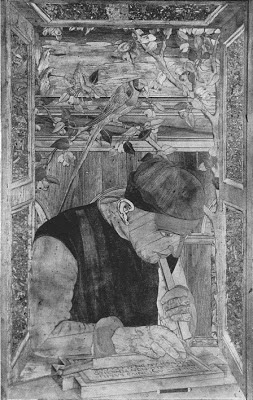Last October we have played the game of the Four Seasons during the 'Knights Festival' (Ridderfestival) in castle Loevestein. We did have the (translation) of the rules of the game as written in the
book of games of Alfonso the Wise.

And on this board four men are to play, each with his pieces of his colour according to the colours of the chess that we have named. And each one of these players is to have twelve pieces of the colours of the aforementioned chessmen which are these: green, red, white, and black – for a total of forty-eight. And they are played with the [7-sided] dice of this same chess and the players roll to see who plays first. And then the player to his right and so on around.
And the first to begin is to place his pieces according to the rolls of the dice as in doze canes and all the others do likewise. And once they all have placed all their pieces each must bring his pieces to where the third player first entered which is across from his own, by playing around to his right according to the rolls of the dice.
And when one makes a roll that he cannot use, let the player who to his right use it. And if he cannot, the third. And if he cannot, the fourth. And also in this game if a roll is made that allows the capture of an unguarded piece, it is to be captured. The one whose piece was captured must return it to where it was first placed.
And no pieces are to be borne off until each player has his pieces in the opposite quarter as is stated above. And the player who first should bear off all his pieces will beat the player to his right and so on around. And this is the explanation of this game.
Doze canes, mentioned above is another tables game in the book of Alfonso the Wise played on a normal tric-trac/backgammon board. The rules of doze canes tell of the capture of gaming counters by the other player:
And the one who can place his pairs the fastest, of the two players, will win because the other will not be able to capture one of his pieces once the point is doubled up.

We interpreted the rules as follows:
First, the players have to enter all their gaming counters on the board. The first player rolls two seven-sided dice and places two gaming counters on the board on the positions indicated by the pips on the dice; position one is the first space on the board of the quarter (season) of that player. This means that on a roll of seven, the counter will be placed in the next season (or quarter of the board), where the next player also can place his gaming counters. Then the next player rolls and places two gaming pieces, and so on, until all gaming counters are placed.
Next, the dice rolls are used to move the gaming counters to the quarter (season) opposite the starting season, i.e. summer moves to winter, autumn to spring, winter to summer and spring to autumn. Once the opposite season is reached, that game counter is removed from the board and play.
More game counters of the same colour can occupy the same space on the board (i.e. 2, 3, 4, etc.)
Odd numbered gaming counters (i.e. 1, 3, 5, etc.) on the same space of the board can be captured by another player by landing on it. The captured piece is returned to the owner of that piece and must be entered anew on the board by him, before he can move his other gaming pieces. Even numbered game counters (2, 4, 6, 8, etc.) on the same space of the board are safe from capture. No game counter of another colour may be placed on spaces with an even number of gaming counters.
If a player can not make a move, because the places are occupied by even numbers of counters, the next player who is able to use that number must use it.
The player that has first moved all his twelve gaming counters to the opposite season (and the board) wins the game.

The game played very well and was easy to learn. Using a seven-sided dice provided interaction between the different players from the start onwards. One game the Four Seasons did take around 20 minutes. We, as well as our children did enjoy playing the game. The youngest who played was aged five, and could easily understand the rules.






